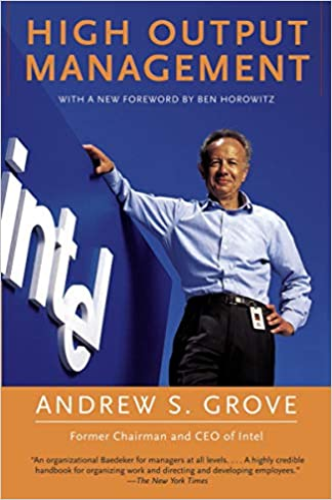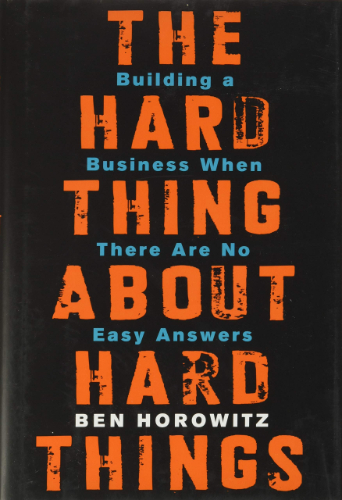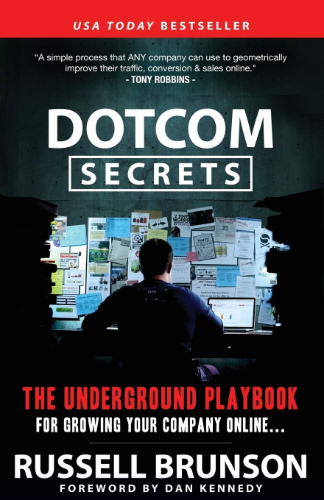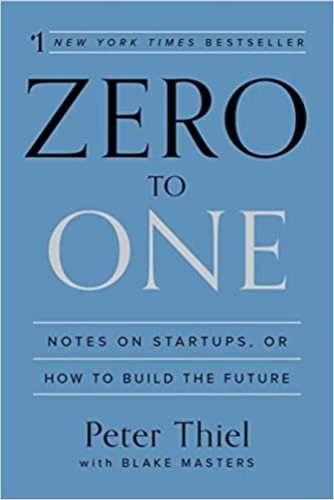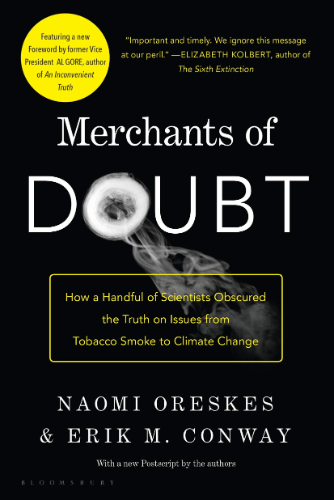Clock speed by Charles H. Fine: Summary and Notes

One sentence summary: Clockspeed by Charles H. Fine introduces new concepts for understanding the forces of competition and making strategic decisions that will determine the destiny of a company or an industry.
One Paragraph summary: Fine explains that each industry has its evolutionary lifecycle (clockspeed) measured by the rate at which it introduces new products, processes, and organizational structures. He illustrates how competitive advantage is lost or gained by how well a company manages a dynamic web of relationships that run throughout its chain of suppliers, distributors, and alliance partners Clockspeed is packed with revolutionary concepts to help managers make key strategic decisions that affect current and future performances.
Favorite quote from the author:
Robert Pozen is one of my favorite writers because he is all about productivity, and I feel that’s where I’m at. I want to be productive, same as you, and if Bob — as he is fondly known — can help, who are we to say no.
Main takeaways from Clockspeed: Winning Industry Control in the Age of Temporary Advantage by Charles H. Fine.
-
Evolution or extinction
-
What fruit flies teach us about businesses
-
Survival for the fittest
-
The secret of life
-
The primacy of chains
-
Laws of supply chain dynamics
-
DNA mapping
-
Cloning in three dimensions
-
Enriching the gene pool
-
Genetic engineering in a fast-clockspeed world
-
Supply chain design is the meta-core competency for organizations
Lesson 1: Evolution or extinction
“In the natural world, species evolve — that is, they change to meet new challenges or they die. The same genetic imperative operates in business”.— Charles H. Fine.
Fine’s big idea is to look at rates of evolution of various businesses or what he refers to as clockspeeds. His insight is that each industry evolves at a different rate, depending on its product clockspeed, process clockspeed, and organizational clockspeed.
The concept of clockspeed comes from fruit flies because they evolve rapidly from egg-hood to parenthood; usually under two weeks. An example of a fruit fly company — a company with a fast clockspeed — is Intel whose products are outmoded within months of their launch. By observing fruit fly companies, businesses can learn many lessons on how to quickly adapt. In other words, observing fruit flies gives us the next big thing; an opportunity to see how one's future might play out based on the experiences of others — who happen to be traveling in a faster lane.
Lesson 2: What fruit flies teach us about business
-
Process clockspeed
-
Product clockspeed
-
Organizational clockspeed
To measure process clockspeed in the manufacturing industry, you need to look at metrics such as capital equipment obsolescence rates. For example, Intel's billion-dollar factory will be out of date in four years, whereas a General Motors factory might last twenty or more years.
To measure product clock speed, consider products launched by different industries. For example, Boeing's rate of new product launch is slightly under two per decade. On the other hand, a major movie studio like Disney might churn out a few dozen products a year.
The most striking difference between Fruit fly industries and industries with slow-clockspeeds is decision-making time. Slow-clockspeed industries have enough time to think and debate before acting. Meanwhile, in the fast-clockspeed environment, there is barely a moment to stop and think, delay equals quick death.
Lessons to learn from fruit flies are:
-
In fast clockspeed industries, the vast proportion of economic value is delivered to final consumers via complex chains comprising many individual organizations, technologies, services, and capabilities
-
High opportunity strategy may not stay constant between being a component supplier and a chain dominator
-
Even if you exert little control over the chain, you can make money by supplying a critical component
-
The primary drivers of fast clockspeed industries are technological innovation and competition. When an industry is subjected to an important innovation, the industry will feel a significant uptick in the overall clockspeed. The consequence of this is that all advantage is temporary and the faster the clockspeed, the more temporary the advantage.
Lesson 3: Survival of the fittest
“The faster an economy evolves — that is, the faster its clock speed — the more temporary a company’s advantage. The key is to choose the right advantage — again and again” — Charles H. Fine
Business genetics provide a dictum to live by: The faster the industry’s clockspeed, the shorter the half-life of competitive advantage. Business leaders have always had to contend with change. Companies and individuals must learn to focus directly on two distinct sets of priorities:
-
Exploring their current capabilities
-
Competitive advantage
Fruit fly businesses teach that the key to victory is to avoid holding on too long to waning capabilities and go for the best new temporary advantage again and again. You should also maintain a flexible organization that will be able to jump when jumping is called for.
Lesson 4: The Secret of life
Fine says that by examining companies’ "molecular" structure —their capability chains — business genetics can help us understand their mutations, evolution, and eventual survival or demise. Business genetics features the industrial equivalent of the double helix. It is a model based on an infinite double loop that cycles between vertically integrated industries and horizontally disintegrated industries populated by myriad innovators, each seeking a niche in open spaces left by the earlier demise of giant industries.
Horizontal structures bend to create fierce commodity-like competition within individual niches. Such competition keeps the players highly focused on their survival. However, a shakeout typically occurs, and stronger players who manage to develop an edge to drive out weaker ones remain. This is because once a firm is large enough to exert some market power in its industry, it sees the opportunity to expand vertically as well.
Lesson 5: The Primacy of chains
According to Fine, no capability is forever, and no capability exists by itself, isolated from all others. The saying that a chain is only as strong as its weakest link is true in business as it is in a mechanical system. To build a company or capability without regard for the chain in which it's embedded is a recipe for disaster. Fine argues there is no competency more critical than that of the superior design of one's capability chain, which is from the final consumer to the sources of the raw materials and new technological concepts.
Capabilities and relationships are constantly evolving. Therefore a company must monitor and manage them all to stay on top. In a fast-clockspeed world, companies must focus strategic thinking on their entire value chain, not merely on individual capabilities. This is because individual capabilities can lose value overnight hastened by new tactics of competitors or rapidly evolving technologies.
Fine quotes George Post, president of research and development at SmithKline Beecham who says:
"The escalating cost and complexity of technical specialization have rendered self-sufficiency unattainable. Companies must establish increasingly diverse networks of technical alliances to ensure access to the full range of resources and skills needed for competitive survival. The evolution of the extended enterprise and building the management skills required to sustain a fluctuating network of alliances will be increasingly influential in corporate success.”
Lesson 6: Laws of supply chain dynamics
The following are the first and second laws of supply chain dynamics:
-
The first is the law of volatility of demand and inventories in the supply chain which tends to be amplified as one looks further away from the end-user.
-
The second is new and called the law of clockspeed amplification, whereby clockspeeds tend to be amplified as one furthers toward the final consumer.
These laws influence the "tiering" of the supply chain, the increase of which is an important trend in supply chain design and management. Tiering is the phenomenon where a designer or assembler of a complex manufactured item, outsources complex systems to "first-tier" suppliers, who in turn, outsource subsystems to "the second tier” suppliers and so on.
The upstream members of the supply chain feel the same cyclical characteristics as the consumer of the economy. But being at the end of the supply chain, the distance traveled is greater, the speed is higher, and offers more pronounced. Lessons from the first law of volatility amplification are:
-
No corporation is an island. Every company is dependent on others in large supply chains and distribution chains. As a result of limiting strategy within the corporation, the enterprise is as meaningless as the purported boundaries of such entities
-
Corporate strategy is insufficient; capability chain strategy must augment it
-
The second law of supply chain dynamics — clockspeed amplification — implies high returns attributable to the differentiation of products and services. At the technology end, the same law implies that large investments in technological infrastructure preclude the frequent scrapping of those investments and the frequent invention and commercialization of wholly new technologies.
Lesson 7: DNA Mapping
Understanding and redesigning a company’s capabilities chain begins with a map that identifies the organizations involved in the company’s activities, the subsystems they provide, the capabilities they bring to the value proposition, and the technological contributions each makes to the company's final product. A business manager can trace production sources of the items used in creating, distributing, and marketing products.
The power of these mappings lies in the discoveries that can help avoid potential crises down the road if necessary steps are taken to correct the problem. To understand a capabilities chain, you have to map it in multiple dimensions.
To take a product or process view of your organization, you begin by enumerating your suppliers who bring raw materials. Next, trace any connections that the suppliers may have with each other. Such an analysis can be valuable for pinpointing possible future conflicts if the supply of the raw materials is jeopardized.
This can be followed by enumerating suppliers in the next tier, those who supply the suppliers. The essential value of the map lies not so much in the details of its intricate connections but in the accuracy of the predictions. It allows you to make decisions about the future of your company and industry.
More valuable insights come from examining the chain maps and their constituent parts in conjunction with dynamic clockspeed analysis. According to Fine, you should ask what he calls clockspeed analysis questions. These are:
-
What is the clockspeed of this chain element and the industry in which it’s embedded?
-
What factors are driving the clockspeed of this element?
-
What are the prospects for a change in clockspeed in this chain element as a result of the expected changes in the competitive intensity of rates of innovation?
-
Where is its industry located in the double helix? Is the industry in a stage of horizontal structure with modular parts or vertical with highly integrated parts?
-
Where are the current power dynamics for this element in the chain?
-
Analyzing the chain maps and their constituent parts in conjunction with dynamic clockspeed analysis helps discover hidden facts and provide insights that can deeply affect the setting of a corporate strategy.
Lesson 8: Cloning in three dimensions
Concurrent engineering is a model technique for a fast-clockspeed world. When firms don't acknowledge and manage supply chain design and management as a concurrent activity to product and process design, they encounter problems late in product development, production costs, manufacturing launch, and logistical support. Analyzing product and process design problems at the architecture level provides a strategic, high-level perspective on how supply chain design can be integrated into concurrent engineering.
Product architecture is the scheme by which the function of a product is allocated to its constituent components. Distinguishing between integral and modular product architectures is fundamental to three-dimensional concurrent engineering. Building on the product architecture concept enables the development of the construct of supply chain architecture.
Supply chain architecture focuses on ownership of assets in the supply chain and is key to deep analysis of product architecture concept. It is essential in extending the integral-modular dimension from products to supply chains, that is, integral products tend to be developed and built by integral supply chains whereas modular products tend to be designed and built by modular supply chains.
Product and supply chain architectures tend to be mutually reinforcing. Strong modular supply chains encourage further development and use of modular products that apply the same to integrated supply chains.
Lesson 9: Enriching the gene pool
“If the Fruit flies of business teach us one thing, is to outsource capacity, not knowledge." — Charles H. Fine
According to Fine, every time an organization makes a sourcing decision whether internal or external, it’s planting a capability seed that has the potential to grow into a valuable and powerful organizational competency. In case products are produced internally, there is an independence loop which means insourcing strengthens internal capabilities.
Production by outsourcing decision provides a dependence loop, in which suppliers develop their capabilities, predisposing customers to become dependent on the suppliers. The faster the clockspeed of the industry, the faster the seeds of capability will grow, if nourished. The sourcing decision determines the location of that seed and if its subsequent growth develops into full competency.
A fast-clockspeed industry has many opportunities to modify its set of capabilities, the race for competitive advantage in capabilities plays itself out at a rapid pace. The goal is then to concentrate on the elements of projects that maximize competitive advantage and assemble the chain accordingly. Fine explains reasons why a company seeks to outsource a process are:
-
Capability: The company cannot make the item or easily acquire such a capability and must seek a supplier
-
Manufacturing competitiveness:The supplier has lower costs or higher quality and can do the job faster for a suitable item
-
Technology:The supplier’s version of the item is better for several possible reasons
Lesson 10: Generic engineering in a fast-clockspeed world
“The ultimate competency is the ability to create and manage new capabilities while growing profits and adjusting to even faster clock speeds.” — Charles H. Fine
“If the Fruit flies of business teach us one thing, is to outsource capacity, not knowledge." — Charles H. Fine
Fine offers two cases to illustrate how a 3-dimensional concurrent engineering analysis can help managers make decisions in a fast clock speed world. The Patient Monitoring Division (PMD) of Hewlett- Packard’s Medical products group, exemplifies how the clock speed and 3-dimensional concept engineering frameworks can help managers design an appropriate strategy in response to a shift along the double helix from integral to modular.
In the second example, we see how a project team at Teledesic employed 3-dimensional concept engineering to support development in its ambitious plan to launch a constellation of 288 satellites that will ultimately provide internet access from any point on the globe.
In both cases, the fast or increasing clock speeds manipulate the use of 3-dimensional analysis: Decisions must be inherent across three dimensions and anticipate changes in store for later generations of decision-makers.
Lesson 11: Supply chain design is the meta-core competency for organizations
Fine explains the fruit flies of business allow us to watch industrial evolution at a fast-forward speed. The business geneticist has the opportunity to observe economic principles that otherwise remain invincible. He says supply chain design is the meta-core competency for organizations. It is the competency of choosing all other competencies. This assertion arises from the observation that all advantage is temporary and that high-leverage control points in industrial capability chains shift over time, with a frequency dependent on the underlying clockspeeds.
He follows that the only lasting competency is the ability to continuously assess industrial and technological dynamics and build capability chains that exploit current opportunities and anticipate future ones.
Wrap Up
Clockspeed by Charles H. Fine seeks to provide a new lens for strategic business analysis — the lens of industry clockspeeds. In my opinion, it is a must-read for anyone looking to understand the complex supply chains that run our world. Fine provides a new way of understanding the business world in a way that is familiar to us — by comparing it to the natural world.
Who Would I recommend the Book To?
Anyone who aspires to have competency in strategic business analysis, have a successful business career, or thrive as an executive manager, will find this book to be an amazing choice.
GET THE BOOK ON AMAZONRate this book!
This book has an average rating of 5 based on 2 votes.








